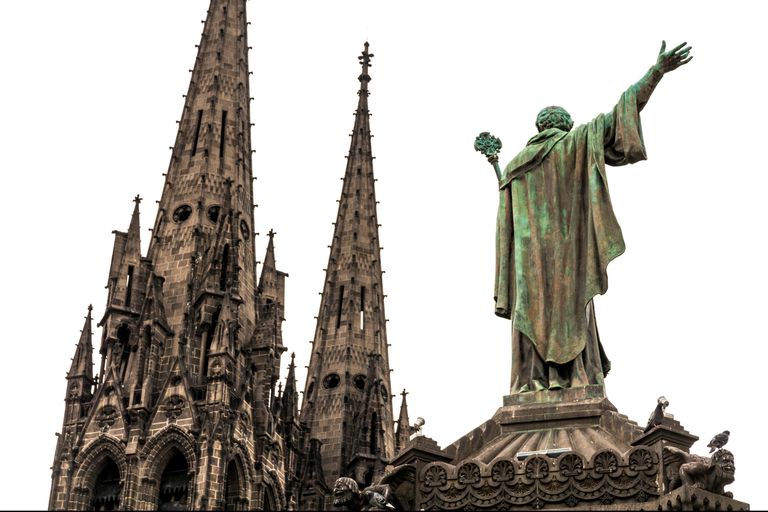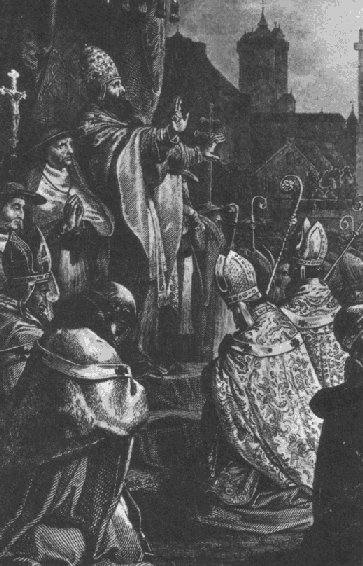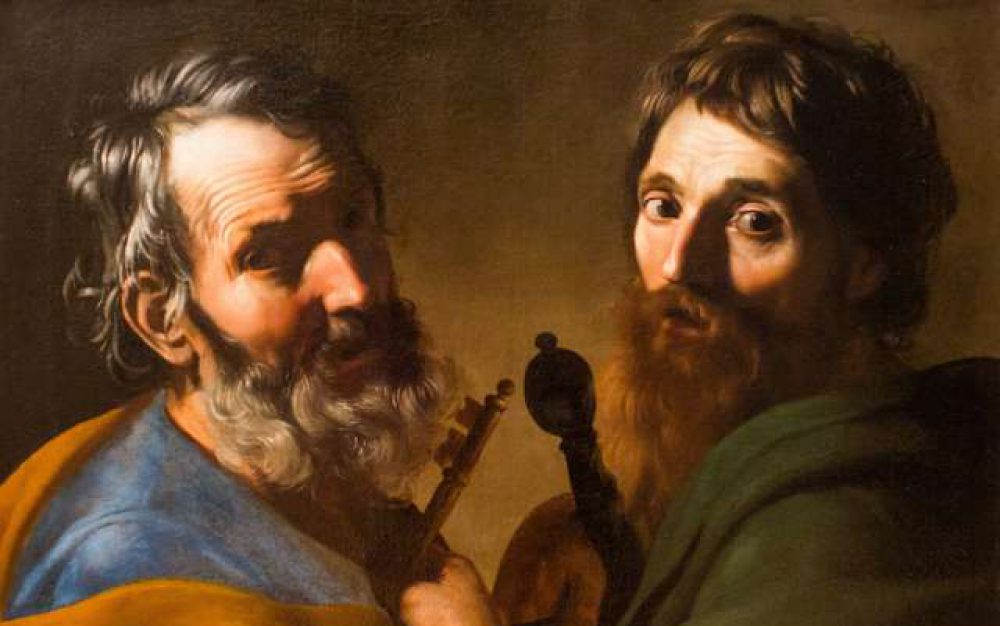Saint of the Day – 29 July – Blessed Pope Urban II (c 1035-1099) Bishop, Pope, Abbot, Confessor – born Odo of Châtillon or Otho de Lagery, was Pope from 12 March 1088 to his death in 1099. Born at Lagery, France and died on 29 July 1099 in Rome, Italy of natural causes.
Urban II was a native of France. He was a descendant of a noble family in Châtillon-sur-Marne. Reims was the nearby cathedral school that Urban, at that time Eudes, began his studies at 1050, under St Bruno O.Cart. (c 1030 -1101), afterwards founder of the Carthusians. Otho later became canon and archdeacon at Reims.
About 1070 he retired to Cluny and was professed there under the abbot St Hugh. After holding the office of prior, he was sent by St Hugh to Rome as one of the monks asked for by Gregory VII. Otho was of great assistance to Gregory in the difficult task of reforming the Church. (2 images below are St Bruno with Pope Urban).

On 12 March, 1088, he was unanimously elected Bishop of Rome, taking the title of Urban II. His first act was to proclaim his election to the world and to exhort the princes and bishops who had been loyal to Gregory to continue in their allegiance. Urban declared his intention of following the policy and example of his great predecessor – “all that he rejected, I reject, what he condemned I condemn, what he loved I embrace, what he considered as Catholic, I confirm and approve”.
Due to issue with the Normans, Urban was unable to stay in Rome. He went to Sicily instead and Southern Italy. There was also an antipope in Rome. Eventually, the troops of pope and antipope met in a desperate encounter which lasted three days, with Urban’s troops winning and Urban returned to Rome. Urban was again expelled from Rome by Emperor Henry IV. For three years he was compelled to wander in exile about southern Italy. He spent the time holding councils and improving the character of ecclesiastical discipline.
Urban also started dealing with a Crusade request during a council held at Piacenza. The Eastern Emperor, Alexius I, had sent an embassy to the pope asking for help against the Seljuk Turks who were a serious menace to the Empire of Constantinople. Urban succeeded in inducing many of those present to promise to help Alexius but no definite step was taken till a few months later, when he summoned the most famous of his councils, that at Clermont in Auvergne. The council met in November, 1095 – thirteen archbishops, two hundred and twenty-five bishops and over ninety abbots answered the pope’s summons. The synod met in the Church of Notre-Dame du Port and began by reiterating the Gregorian Decrees against simony, investiture and clerical marriage.
Thousands of nobles and knights had met together for the council. It was decided that an army of horse and foot should march to rescue Jerusalem and the Churches of Asia from the Saracens. A plenary indulgence was granted to all who should undertake the journey pro sola devotione and further to help the movement, the Truce of God was extended and the property of those who had taken the cross was to be looked upon as sacred.
Coming forth from the church the pope addressed the immense multitude. He used his wonderful gifts of eloquence to the utmost, depicting the captivity of the Sacred City where Christ had suffered and died
– “Let them turn their weapons dripping with the blood of their brothers against the enemy of the Christian Faith. Let them, oppressors of orphans and widows, murderers and violators of churches, robbers of the property of others, vultures drawn by the scent of battle, let them hasten, if they love their souls, under their captain Christ to the rescue of Sion.”
In October, 1098, the pope held a council at Bari with the intention of reconciling the Greeks and Latins on the question of the filioque “and from the Son”. One hundred and eighty bishops attended, amongst whom was St Anselm of Canterbury (1033-1109) Doctor of the Church. The close of November saw the pope again in Rome; it was his final return to the city. Here he held his last council in April, 1099. Once more he raised his eloquent voice on behalf of the Crusades and many responded to his call. On 15 July, 1099, Jerusalem fell before the attack of the crusaders but Urban did not live to hear the news.
He died in the house of Pierleone which had so often given him shelter. His remains could not be buried in the Lateran because of the antipope’s followers who were still in the city but were conveyed to the crypt of St Peter’s where they were interred close to the tomb of Adrian I. Guibert of Nogent asserts that miracles were wrought at the tomb of Urban, who appears as a saint in many of the Martyrologies. Thus there seems to have been a cult of Urban II from the time of his death, though the feast (29 July) has never been extended to the Universal Church.
Amongst the figures painted in the apse of the oratory built by Calixtus II in the Lateran Palace is that of Urban II with the words sanctus Urbanus secundus beneath it. The head is crowned by a square nimbus and the pope is represented at the feet of Our Lady. The formal act of Beatification did not take place till the pontificate of Leo XIII. The cause was introduced by Mgr Langenieux, Archbishop of Reims, in 1878 and after it had gone through the various stages the decision was given by Leo XIII on 14 July 1881.

2 thoughts on “Saint of the Day – 29 July – Blessed Pope Urban II (c 1035-1099) Bishop”